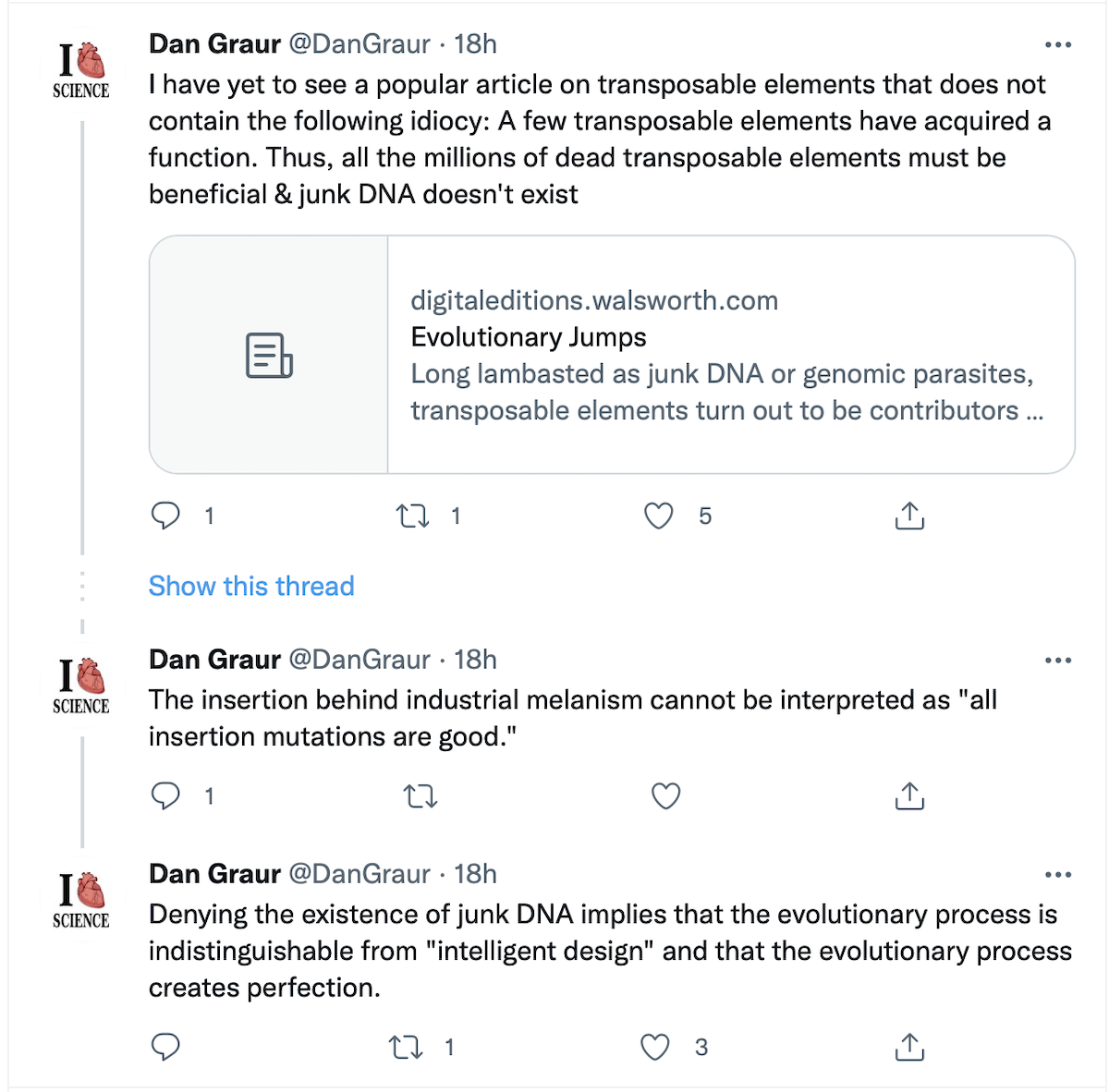Dan Graur: The Core Rationale for Claiming “Junk DNA”
See the last entry in this Twitter thread (below), and then our follow-up comments under the screen capture. Dan Graur is a University of Houston biologist and prominent junk DNA advocate. The link to the article in The Scientist that he is grumbling about is included at the very end of this post.

So What’s Wrong with Graur’s Argument?
First, it is unlikely that the growing number of biologists looking for possible functions in so-called “junk DNA” are ID proponents (although a few might be).
Consider this syllogism, however:
- Evolutionary processes lack foresight.
- Processes without foresight create novel functions only infrequently, more often causing non-functionality.
- “Junk DNA” appears to be non-functional.
- Therefore, since evolution is true, it is pointless to look for functions in apparently functionless (“junk”) DNA; what appears to lack function, truly does lack function.
Here’s the Problem
Premises (1) and (2) could be true, as doubtless most biologists would agree, yet (3) does not follow from either premise, and refers in any case only to an appearance, exactly the sort of superficial impression calling for further analysis. Moreover, (4) is a counsel of despair — a GENUINE science-stopper. Since “only infrequently” in premise (2) is defined entirely by the sample size, not by evolutionary theory itself, “no function” claims are empirically unsupportable, resting wholly on negative evidence.
Graur’s argument also affirms the consequent, as tendentious arguments often do. Just take a look at premises (2) and (3) and their logical relation.
That explains why many researchers, who are fully on board with evolution, nonetheless ignore Graur’s advice. They decline to kiss the no-function wall, as Paul Nelson put it back in 2010:
Why Kissing the Wall Is the Worst Possible Heuristic for Biological Discovery
In biology, the claim “structure x has no function” can only topple in one direction, namely, towards the discovery of functions. “No function” represents a brick wall of infinite extent, from which one can only fall backwards, into the waiting arms of a function one didn’t see, or overlooked.
Because one was kissing the wall, so to speak.
Here is the article that got under Graur’s skin: “Evolutionary Jumps,” by Christie Wilcox.
No comments:
Post a Comment